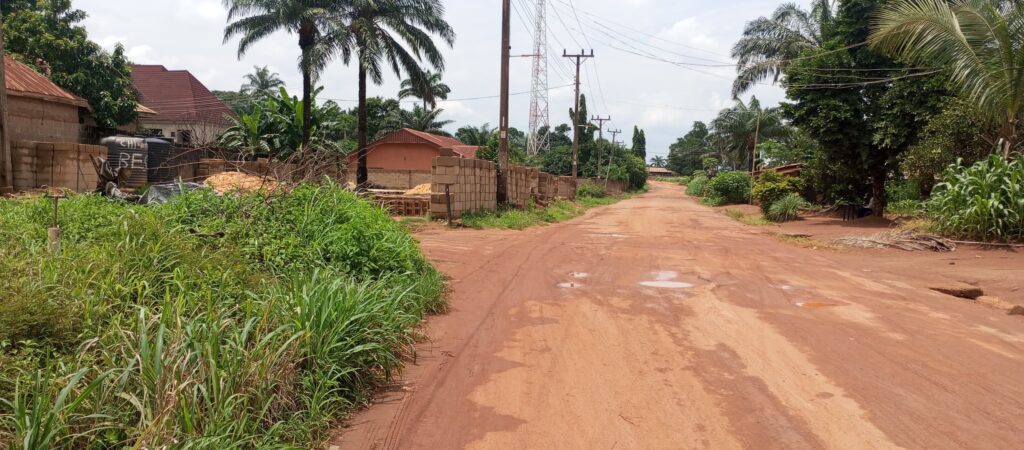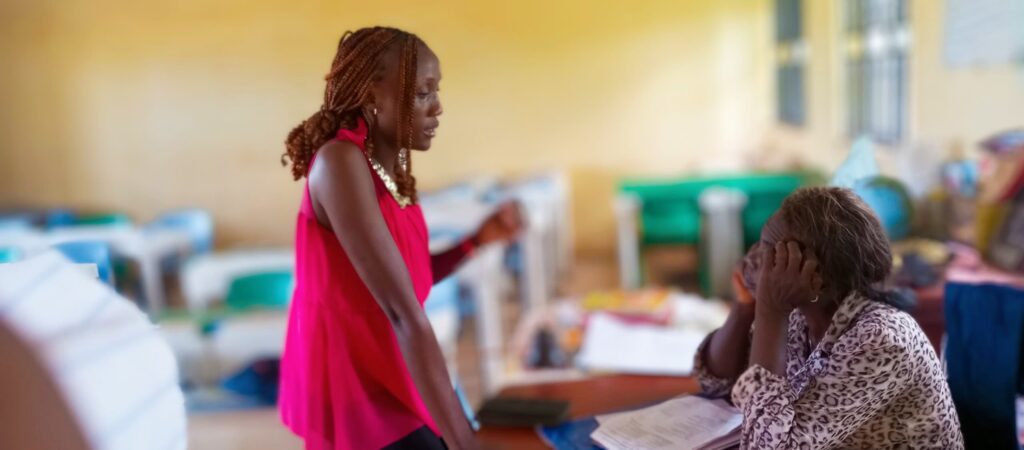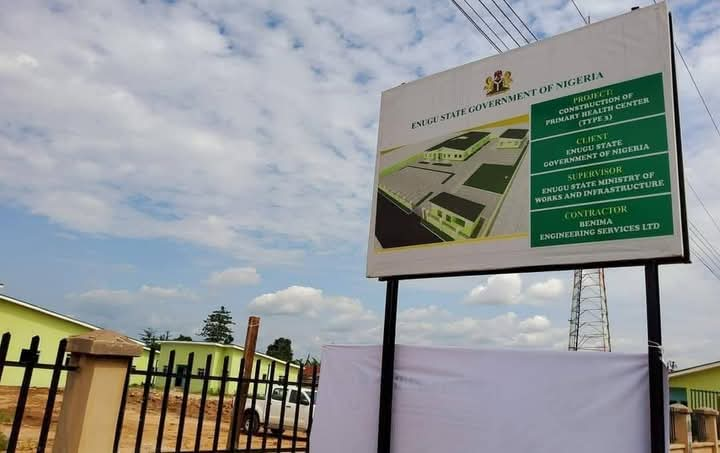Nigeria’s Primary Health Care Crisis: How Poverty, Poor Medication, Distance Fuels Incomplete Treatment
As Nigeria’s rural communities cry out for healthcare, one question remains: Can the government and stakeholders bridge the gap and ensure quality medical care reaches those who need it most? The fate of countless lives hangs in the balance, and the time for action is now.
Precious Nwonu provides more insight into the state of Primary Health Centres in rural Enugu.
When Mrs. Ajah, a primary school teacher at Mkpofia Obeagu Community Primary School in Enugu South Local Government Area of Enugu State, felt her blood pressure spiraling dangerously, she had only one option — to travel into the city for medical help. “The health center in our community has no professional medical personnel and no equipment,” she said, her voice marked with frustration. “When I had to go to Enugu State University Hospital for tests, I had to wait two days to get my results and it was 150/100. That hospital is over an hour away from here.”
As a civil servant, she can afford these journeys and services, but she admits many of her neighbors can’t. “Most of them either turn to herbs or patronize local chemists who aren’t trained professionals.”
“Anybody whose blood pressure is above 130/90mmHg should go for treatment,” says Ifeoma Obande, Assistant Director of Nursing at the University of Abuja Teaching Hospital. “However, two specific conditions require immediate hospital attention. The first is Hypertensive Urgency, where the blood pressure is greater than 160/110mmHg. Although there may be no clear signs of organ damage, symptoms like headache, dizziness, blurred vision, shortness of breath, or chest pain can appear and must not be ignored. The second is Hypertensive Emergency, which involves severely high blood pressure accompanied by life-threatening damage to vital organs—this is a critical situation that demands urgent medical intervention.”

Trapped by Distance and Poverty
For many residents of Obeagu, access to basic medical care remains a luxury. Another teacher, Priscilla, shared her struggles with chronic stomach discomfort that has kept her up many nights. Her condition persists not because treatment isn’t available, but because she can’t afford it. “By the time I get my salary, I have to sort house bills. I bought some drugs from a roadside pharmacy, but it did nothing,” she said, her face weary.
The financial weight of healthcare has become too heavy for her to carry. An average primary school teacher earns between N40,000 and N50,000 monthly. With the current state of the economy, this amount is barely enough to feed one person for a month—let alone support a family. The cost of food has skyrocketed: a painter of garri now sells for between N4,000 and N5,000, while a bag of rice goes for N80,000 to N90,000 and so many other food stuff have become too expensive. Even house rent has become very expensive.
The issue Priscilla and Mrs. Ajah face is echoed across many rural parts of Nigeria. According to a 2023 report from the Nigerian Primary Health Care Development Agency, over 60% of rural dwellers lack access to functional primary healthcare centers. These figures are not just statistics — they represent real people, struggling daily with health issues that could be treated or managed if facilities were within reach.
Orthodox Care vs. Indigenous Treatment
With the rise in orthodox healthcare deserts, alternative treatments are filling the gap. Chinyere Okeke, a well-known local herbalist, blends traditional remedies with a touch of modern diagnostics. “If the sickness is unfamiliar, I go to a lab scientist to run tests, then I return and treat myself with herbs,” she said. “I know what English drugs to take, but I choose natural ingredients like garlic, ginger, and cinnamon sticks. They are powerful antioxidants.”
For Chinyere, this method has not only worked for her but has also helped others. Recounting a personal health scare, Okeke shared how she once battled shortness of breath and fatigue. “I was told I had cholesterol, malaria, and typhoid,” she said. Despite knowing conventional drugs like Lipitor, Ciprotab, and Amartem, she opted out. “I stuck with herbs. I’ve treated inflammation, pneumonia, even prostate problems. One woman who couldn’t conceive came to me; after four days of my herbs, her pelvic pain disappeared.”
Her faith in nature’s pharmacy is deeply rooted, passed down from her mother — a midwife and herbalist. Not everyone in Mkpofia shares Chinyere’s depth of herbal knowledge, but many still turn to herbs by default. Nwite and Moses, both motorcycle riders in the community, rely on a mix of drugstore medications and traditional remedies. “If I dey sick, I dey go chemist go buy drugs and I dey also do herbal drugs,” Nwite explained in Pidgin. “If I want to treat malaria, I go enter bush, pluck pawpaw, mango and guava leaves, boil am and drink am.” These makeshift solutions speak volumes about the healthcare void the residents are forced to navigate.
Fake Drugs, Incomplete Care and the Cost of Human Lives
Healthcare professionals in the area are not oblivious to the situation. Justina Odoh, a health worker at the Ikirike Health Centre, emphasized the dire need for government intervention. “Rural health centers need doctors, lab scientists, and better welfare for workers,” she said. “With proper supervision and training, these centers can function well. When the staff are trained, it brings about active service in the health center. Staff quarters should also be built to reduce transport issues for workers.”

She insisted that with adequate resources, rural health centers can become reliable medical havens. But the problem isn’t just manpower — it’s also the quality of medications. “When free drugs are distributed, most times, they don’t bring branded, effective ones,” Odoh explained. “Take Augmentin for example. The real one from GSK or Emzor works, but you won’t find those in health centers. You get the unbranded types that don’t work well. That’s why patients get frustrated.”
She noted that even when antibiotics are prescribed, they are often not strong enough to fully clear infections. In malaria treatment, however, she acknowledged that some quality drugs are available. “You can get Ronaridene, Coartem, Amartem, and Lonart in the health center. Those are good drugs. But when it comes to treating bacterial infections, the options are very limited,” she added. “If it’s serious, we refer patients elsewhere — we only handle mild cases.”
These referrals, though well-intentioned, often fall on deaf ears. Many patients, once referred, choose not to follow up. “When we tell them to go to the city for stronger drugs, they say it’s too far,” said Odoh. “So they go back home and treat themselves with herbs instead.” For many, the cost and distance are just too much to bear — and so begins a cycle of incomplete care.
Following the release of the 2023 National Health Facility Survey (NHFS) report, the NBS revealed that about 65.7% of primary health centres (PHCs) and 49.4% of secondary facilities have insufficient drug supplies.
The lack of trust in primary health centers is deeply rooted in repeated disappointments. When patients arrive only to be told that the drugs they need are unavailable or that they must travel farther for help, they lose faith in the system. “It’s frustrating to see,” said Odoh.
From Crisis to Care: How to Strengthen Rural Health Care Systems
Despite these challenges, Odoh remains hopeful. “If government equips our health centers with professionals and the right tools, we can turn things around. Although health centers are majorly for disease prevention, but these centers should not just be for disease prevention, they should treat illnesses too,” she emphasized. “Prevention is good, but what happens when someone is already sick?”
The residents of Obeagu and other rural communities are not asking for luxury. They are asking for dignity, the right to access quality healthcare without journeying miles or risking their lives with unverified remedies. In a country as vast and resourceful as Nigeria, this shouldn’t be too much to ask.
While unregulated and poorly equipped primary health centres abounds, Type‑3 Primary Health Care Centres in Enugu—particularly in Udenu, Igbo-Etiti, Igbo Eze South, Isi-Uzo, Nkanu East (Nara), Awgu, and Uzo‑Uwani LGAs commissioned in 2020 during the tenure of Governor Ifeanyi Lawrence Ugwuanyi are widely regarded as the most functional and high-performing in the state. These facilities are fully staff‑complemented including at least two doctors and multiple nurses/midwives, offers 24/7 services and feature stable power, water supply, labs, resident staff quarters, and even minor surgical capacities like Caesareans and hysterectomies, still requires maintenance and fiscal accountability.
Type-3 centres stand out because they are professionally staffed, including medical officers who reside on-site; they are equipped with modern diagnostic tools, theatres, maternity wards, and laboratories; they operate round-the-clock with support from renewable energy, potable water, and staff housing; and they serve as referral centres for surrounding primary health centres (PHCs), delivering high-impact maternal, child, and other essential care services.
Type-3 PHCs, are now a crucial part of the Nigerian healthcare system. It needs to do more in providing a higher level of primary care services to a larger population, acting as a bridge to more specialized secondary care.

With the increase in human population, proliferation of fake or substandard drugs including persistent incomplete care in ritual communities, the need to upgrade PHCs Type-1 and Type-2 to Type-3 model has become more crucial in hiring resident healthcare staff—including doctors and nurses—to ensure continuous services. This also includes investing in basic infrastructure such as solar power, piped water, sanitation, and staff quarters; establishing laboratory and minor surgery capabilities, particularly for maternal health and emergencies and leveraging Basic Health Care Provision Fund (BHCPF) grants to upgrade equipment, hire midwives, and strengthen overall service delivery.
Enugu State is made up of 17 Local Government Areas (LGAs), collectively divided into 280 electoral wards, and by policy, each ward is expected to have one Type‑2 Primary Health Care (PHC) centre, meaning the number of PHCs in any LGA equals its ward count. For instance, Enugu North LGA has 13 wards and should have 13 PHCs, Enugu East has 12 wards with 12 PHCs, and Enugu South has 13 wards, so it should also have 13 PHCs.
Before the state’s intervention, Enugu State Government had evaluated 566 Primary Health Centres (PHCs) and found that about 47% were non-functional—many housed in containers or dilapidated structures—while only 12% were barely functioning adequately. A sampled study revealed that 87% of the PHCs offered at least half of the required basic services, but none had ambulances, and mental health services were available in only about 37% of the facilities.
The Time to Take Action Is Now
The heartbreaking stories of Mrs. Ajah, Priscilla, and many others in Obeagu reflect a wider crisis facing rural communities across Nigeria—people are suffering not because treatment doesn’t exist, but because it is simply out of reach. No one should have to travel hours to check their blood pressure or turn to unregulated herbal remedies out of desperation.
Government and stakeholders must urgently invest in rural health infrastructure by equipping primary health centres with trained professionals, functional laboratories, quality medications, and staff quarters. Access to healthcare is not a privilege—it is a right. Let us rise to ensure that every Nigerian, regardless of where they live or how much they earn, can walk into a health centre and receive the care they deserve.





Comments